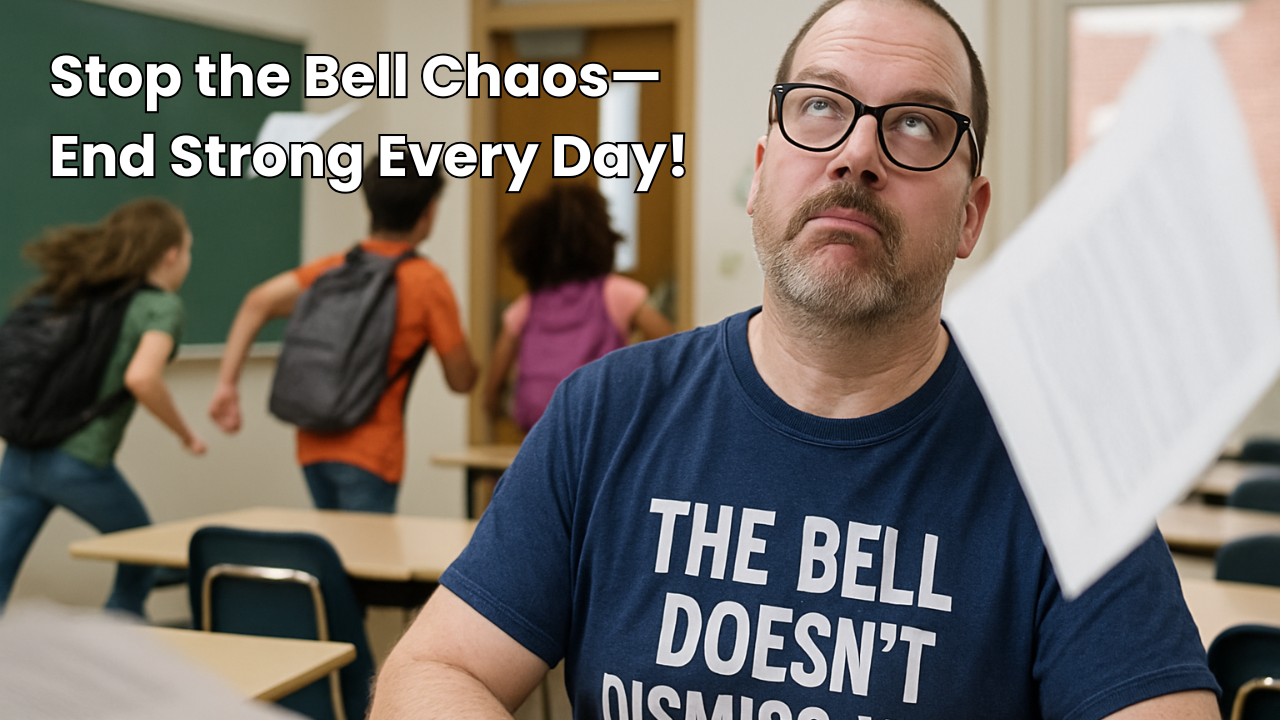
Silent reading is a great way to start your class period, as a class warm-up.
It's so integral to my class, that we do it at least 3 times per week if not more!
I also teach my students that if they have any down time, like after a test, when all of their assignments are completed, or if I have to step outside of the class to speak to someone, they know to get out their book and start reading. I engrain this into them so well that it's just naturally what they do.
I explain to them that reading time is sacred time. I quote Krashen to them and explain that 70% of their langauge ability comes from reading.
I let them know that I don't tolerate interruptions during this time. Everyone is to read silently to themselves and use context clues and posters around the room to make meaning of the text.
If they have a burning question, they know to hold it until after the timer goes off and then they can ask me the question.
1. Everyone reads, including YOU!
This is extremely important. Everyone who is in the room must read silently during silent-reading time. That means any aides you may have in the room, any guests who enter the room during reading time, all students, and of course, you, yourself.
This is NOT the time to be checking emails, grading papers, or planning that next great lesson.
It's not just important, it's paramount that you read as well. You need to demonstrate what it looks like to read silently.
Model what you want your students to be doing.
If you must walk around to monitor students, do so while reading. Stop and read next to the student who is off task or is non-compliant. When they get back on track, move on to another part of the room. No words need to be spoken.
If they don't get it with proximity, then bend down and whisper in their ear the expectations.
But all the while, you are reading.
Let them know that reading time is SACRED!
2. Choice.
Many teachers call silent reading, free-choice reading because allowing students to have free choice over what they read (as long as it's in the target language) is important to both their and the overall silent reading success.
It's not our job to tell them what they can or cannot read. Let them choose on their own. If they pick a book that is too difficult for them, let them discover that for themselves. If they pick one that's too easy, who cares? They're reading, right?
Of course, if they ask you for your assistance, then by all means, help them choose a book that is both appropriate to their level AND is interesting to them.
The best way to do this is to curate your own classroom library of readers and texts.
You can print of stories that you write and put them in protective sleeves for students to read. These are extremely helpful for lower levels.
You can also collect readers from a variety of resources: brycehedstrom.com, miracanion.com, cpli.net, fluencymatters.com, tprsbooks.com, and Amazon to name a few.
Don't have any funds? You can set up a Donorschoose.org campaign or an Amazon Wishlist that you can email to parents or share on social media. You can see if there are any school funds or even library funds available to help you stock your library.
I highly recommend getting at least 2 copies of each book, that way, students can read in pairs during other reading activities. Plus, some books are quite popular and students will want to read them at the same time.
3. Start small and increase time slowly.
Depending on the level, you will want to start small and increase time slowly.
Start with 2 or 3 minutes and as their tolerance for reading increases, add more time 1 minute at a time.
Depending on how long your class periods are, I wouldn't read for more than 10-15 minutes if your students build up that much tolerance.
I've never gotten beyond 10 minutes.
We are currently at 5 after 2.5 months of school and some of my students are asking for more (I teach levels 2 and 3) and so I'm going to give them 7 minutes starting this week. I think they can handle it if they're asking for it.
But remember to always leave them wanting more!
4. Consistency is key.
You need to make silent reading a habit.
It can't be sporadic or kids won't know what to expect. Keep it consistent and students will get used to the schedule and know when it's time to read.
I generally have my students read 2 or 3 times per week. We read on Tuesdays, Thursdays, and every other Friday.
This is a schedule that both they and I can keep. It's enough time per week to keep them wanting to read without it being too much.
Remember to always keep them wanting more!!
5. Use as a warm-up.
I love to start class SILENT!!
To this end, for me and my students, it's the best way to start class.
Students know to come in, get their book out or to check out a new book and to start reading.
No matter what happened before, whether they're coming from lunch or PE, whether they just had a fight with their friend or boyfriend or girlfriend, they get to start class in a calm state.
It centers us and when the timer goes off, we are all ready to start class and maximize learning.
Plus, starting the class with silent reading shows students it's a priority. If you do it some other time in class, you may forget, another part of your lesson may run long, and you might not get to it.
But if you start class with silent reading, it's never forgotten.
So those are my 5 Simple Steps to Silent Reading. Nothing too difficult or complicated, but enough to get you and your students on the right track, reading for proficiency.
Silent reading is one of my favorite activities because it gives my voice a break and allows me to sit down and enjoy a good book!
How about you? Let me know your experience with silent reading in the comments below!



